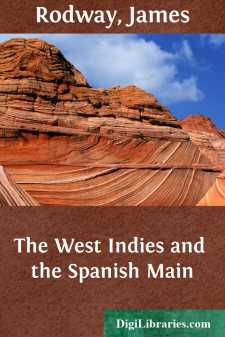Categories
- Antiques & Collectibles 13
- Architecture 36
- Art 48
- Bibles 22
- Biography & Autobiography 813
- Body, Mind & Spirit 142
- Business & Economics 28
- Children's Books 15
- Children's Fiction 12
- Computers 4
- Cooking 94
- Crafts & Hobbies 4
- Drama 346
- Education 46
- Family & Relationships 57
- Fiction 11828
- Games 19
- Gardening 17
- Health & Fitness 34
- History 1377
- House & Home 1
- Humor 147
- Juvenile Fiction 1873
- Juvenile Nonfiction 202
- Language Arts & Disciplines 88
- Law 16
- Literary Collections 686
- Literary Criticism 179
- Mathematics 13
- Medical 41
- Music 40
- Nature 179
- Non-Classifiable 1768
- Performing Arts 7
- Periodicals 1453
- Philosophy 64
- Photography 2
- Poetry 896
- Political Science 203
- Psychology 42
- Reference 154
- Religion 513
- Science 126
- Self-Help 84
- Social Science 81
- Sports & Recreation 34
- Study Aids 3
- Technology & Engineering 59
- Transportation 23
- Travel 463
- True Crime 29
The West Indies and the Spanish Main
by: James Rodway
Description:
Excerpt
INTRODUCTION
The story of the West Indies and Spanish Main is one to stir the hearts of many nations. The shores of the Caribbean Sea have been the scene of marvellous adventures, of intense struggles between races and peoples, of pain, trouble, and disaster of almost every description. No wonder that the romance writer has laid his scenes upon its beautiful islands and deep blue waters, for nowhere in the world, perhaps, could he find such a wealth of incident. From "Robinson Crusoe" to Marryat's genial stories, and down to "Westward Ho!" and "Treasure Island," old and young have been entranced for many generations with its stories of shipwrecks, pirates, sea-fights, and treasure-seekers. Yet with all this the field has not been exhausted, for hardly a year passes without a new romance dealing more or less with the "Indies."
Under this name of the Indies the islands and continent were first known to the Spaniards, and it was not until some years had passed that the mainland received the name of Terra Firma. The string of islands facing the Atlantic were the Antilles, so called from a traditional island to the west of the Azores, marked on maps and globes of the fifteenth century. This "Bow of Ulysses," as Froude called the islands, was divided into the Greater and Lesser Antilles, the latter being also known as the Caribbees, from their original inhabitants. Other divisions were made later into Windward and Leeward Islands, but these differed so much in the descriptions of different nations that it would be as well to leave them out of the question. Perhaps the best way would be to name the whole the Antilles or West Indian Islands and divide them, in going from north to south, into the Bahamas, the Greater Antilles, and the Caribbees.
When we think of these beautiful islands and shores they recall those of that other "Great Sea" which was such a mighty factor in the development of Greece and Rome, Phœnicia and Carthage, Venice and Genoa. As Ulysses and Æneas wandered about the Mediterranean, so the early voyagers sailed along the coasts of the Caribbean Sea and the Gulf of Mexico in fear of anthropophagoi, amazons, giants, and fiery dragons. As the Indies were the scene of struggles between great nations and the raids of buccaneers, so also was the Mediterranean a battlefield for Christian and Turk, and a centre for piracy.
Reports of golden cities, pearls and emeralds in profusion, and wealth that passed all description, led the Spaniards to explore every island and river, until the cannibals became less alarming. Yet their sufferings were terrible. Hurricanes sunk their frail craft on the sea and earthquakes wrung their very souls on land. Starvation, with its consequent sickness and death, destroyed one party after another, but they still went on. The discovery of the riches of Mexico and Peru led them to look for other rich nations, and to travel thousands of miles on the mainland, guided by the reports of the Indians. Undaunted by suffering and failure, they would often try again and again, perhaps only to perish in the attempt at last....


